Drive sales on autopilot with ecommerce-focused features
See FeaturesStarting a dropship coffee business is a lucrative opportunity due to the high demand for quality coffee and the potential for repeat subscriptions.
Choosing between private label and white label models affects your branding control, pricing potential, and overall business strategy.
Selecting the right products and suppliers is crucial, as they directly impact customer satisfaction and retention.
Effective marketing strategies, including SEO, social media, and email automation, are essential for driving traffic and encouraging repeat purchases in your coffee dropshipping store.
One of the easiest ways to sell high-demand coffee products online without ever roasting or shipping them yourself is to start a dropship coffee business.
Coffee is perfect for dropshipping because caffeine enthusiasts have driven global coffee demand and are more likely to sign up for regular repeat orders or subscriptions. Starting a coffee dropping business gives you a lot of room for branding through packaging and product storytelling.
We’ll clear up any doubts about whether dropshipping coffee can be profitable and discuss how to select products and suppliers, build a store, and market and retain customers.
Quick sign up | No credit card required
Is dropshipping coffee profitable?
Yes, it can be profitable to dropship coffee if you match price to perceived quality and build the business strategically. Buyers are willing to pay more for a coffee that looks and tastes premium, and they’ll return if they like it.
Customers who subscribe or reorder monthly raise lifetime value and make profits more predictable. So, if your coffee is of high quality and appeals to your target audience, you’ll generate more revenue for your dropship coffee business.
Typically, you can sell coffee for two to three times its wholesale price, resulting in higher margins, but the actual margins depend on various factors, such as:
- Supplier location and shipping costs: Shipping from faraway locations raises the total cost
- Packaging and branding expenses: Custom packaging and better materials reduce your margin
- Fulfilment model (white label vs. private label): Private label lets you charge more, but increases upfront costs
- Subscription options: Subscriptions spread acquisition costs and increase lifetime value
So, is dropshipping coffee profitable? Yes, but success depends on retention and quality of the product, unlike impulse-buy niches.
Private label vs. white label coffee dropshipping
Private label and white label are the two most common approaches to dropship coffee. Setting expectations up front helps you establish how the business will operate.
In both cases, the supplier roasts, packages, and ships the coffee. The key difference lies in how much control you have over your branding and the ability to offer unique products. Your business model will also decide how flexibly you can make changes to products.
Your choice affects four big things: pricing potential, brand positioning, launch timeline, and the pool of suitable dropshipping suppliers.
Let’s discuss the two models you can use to dropship coffee.
Private label coffee dropshipping
With a private label, a supplier roasts and ships the coffee, but you sell it under a brand you control.
It’s great for sellers who want to build a brand and differentiate themselves on look, taste, and story rather than competing solely on price.
Key benefits:
- Brand uniqueness: You sell a version of the product nobody else has
- Higher pricing potential: Since you use custom branding, you can position your product as a premium one
- Stronger customer loyalty: Buyers tend to become loyal to a coffee brand they like, rather than a generic product
- Greater creative freedom: You can test exclusive blends and themed collections
- Consistent brand experience: Cohesive packaging and copy build trust
Key challenges:
- Upfront branding work: You’ll invest time and money in design assets
- Higher per-unit or setup costs: Custom packaging and set-up fees increase costs
- Longer prep time before launch: Custom work slows down time-to-market
- Minimum order quantities: Branded dropshipping sometimes needs larger orders
- More brand responsibility: You have to maintain quality and messaging everywhere
White label coffee dropshipping
White label is the most straightforward route to dropship coffee. Suppliers make standard coffee bags that you can add to your store with little or no changes.
It’s ideal for people who are just getting started or creators who want to sell coffee as merchandise. It’s also great for sellers who wish to test buyer interest before building a brand.
Key benefits:
- Faster to launch: You can go live with listings very quickly
- Low startup costs: No immediate spend on labels or packaging design
- Simple operational setup: Few decisions mean faster setup and fewer mistakes
- Low commitment: You can drop items that don’t sell without significant losses
- Ideal for early audience testing: It helps you find what customers actually want
Key challenges:
- Limited differentiation: Other coffee dropshipping stores may sell the same product
- Harder to charge premium prices: Buyers pay more for unique branding and story
- Less flexibility to add custom blends: You’re tied to the supplier’s standard options
- Weaker brand identity: Packaging and messaging won’t stand out as much
- Lower long-term growth potential: You’ll likely need to switch to private label to scale
Here’s an example of a white label coffee dropshipping supplier:

How to start a coffee dropshipping business
Here’s a step-by-step guide you can use to dropship coffee and start your dropshipping store.
Step 1: Choose the best coffee products to dropship
The products you choose decide who walks into your virtual shop and why they make a purchase. A focused offer helps you stand out and makes marketing much easier.
Here are some popular types of coffee and why they sell:
- Specialty or single-origin coffee: Fans of craft coffee buy these for clear tasting notes and for a specific origin
- Flavored coffee: Known for its fun and variety
- Organic or ethically sourced coffee: For conscious shoppers who believe in ethical values
- Mushroom coffee: Trend-followers and health-conscious buyers try this for novelty and potential benefits
- Coffee pods/capsules: Home brewers who want speed love to grab pods
- Instant coffee: People who need an easy-to-prepare, low-cost option pick this
- Decaf coffee: Those avoiding caffeine but wanting coffee’s comfort choose decaf
- Samplers and bundles: For trial buyers and gifters who want variety in one order
Once you’ve chosen the product mix to dropship coffee, step two is to source a supplier who can deliver those products consistently and at a steady quality.
Step 2: Find the best coffee dropshipping suppliers
Your supplier sets the customer experience. They decide how fresh the beans arrive, how the product looks and feels, and how quickly orders reach buyers. A strong supplier makes it easier to earn positive reviews and get repeat buyers.
Here’s what you should look for in a potential supplier:
- Product quality and consistency: Ensure cup tests and batch standards match your promise to customers
- Available product formats: Check for the roasts and styles you plan to sell
- Private-label or white-label options: Know how much you can customize the look
- Shipping speeds and regions: Ask about delivery times for your main markets
- Pricing and margins: Check that your margins survive after all costs
Always order samples first to compare the taste, smell, bag quality, and delivery process before making a choice.
Here are some coffee dropshipping suppliers you can choose from.
Dripshipper
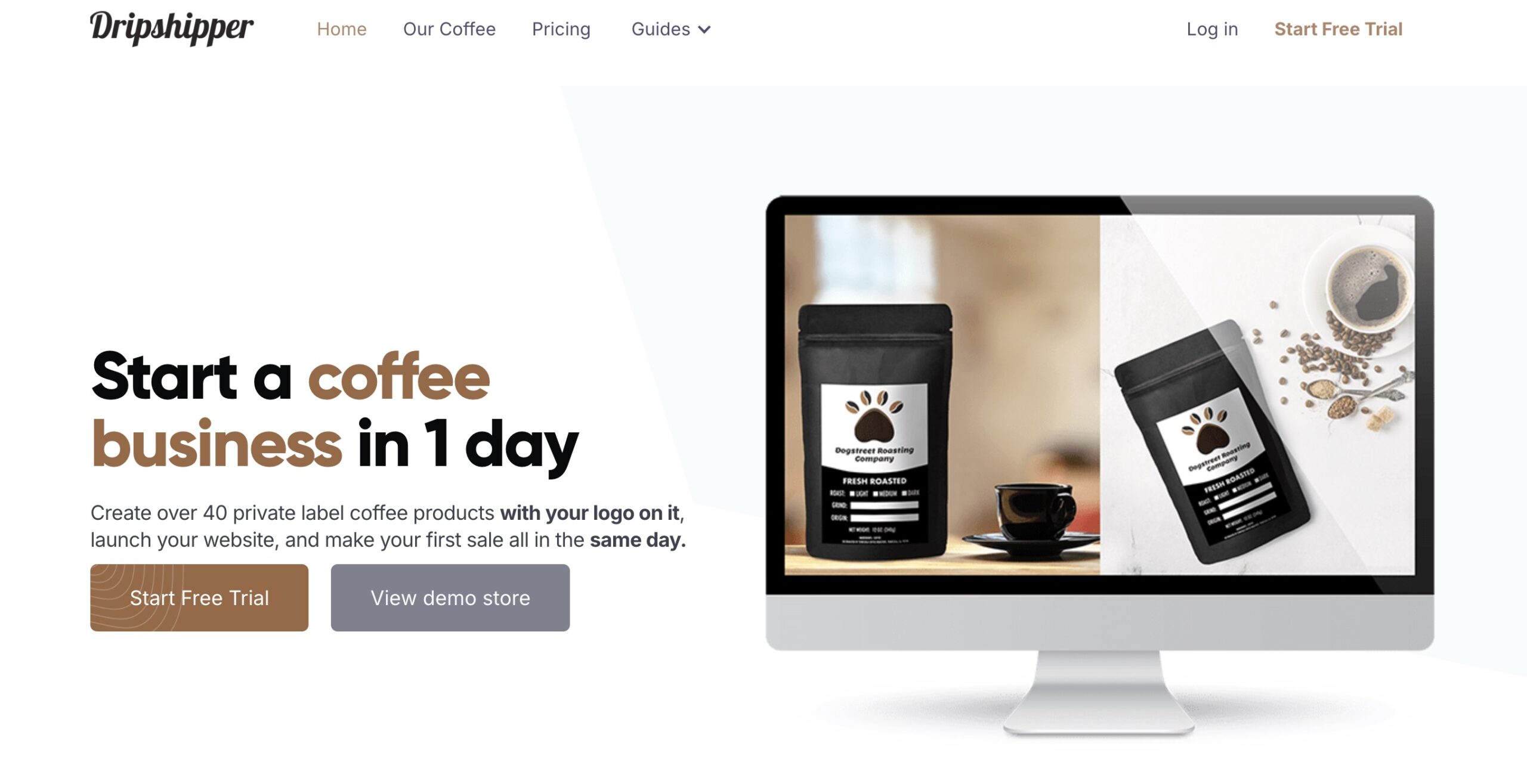
Dripshipper focuses on dropshipping for ecommerce with easy store integration. It offers white-label roasts and subscription support to help you dropship coffee. It’s ideal for coffee dropshippers who want a quick setup and simple recurring order options without managing stock.
Joe Garage Coffee

It roasts small lots and leans into specialty profiles and offers private label dropshipping. It’s Ideal for those who want to sell distinctive single-origin or signature-blend coffees and build a loyal following around taste and story.
Temecula Coffee Roasters
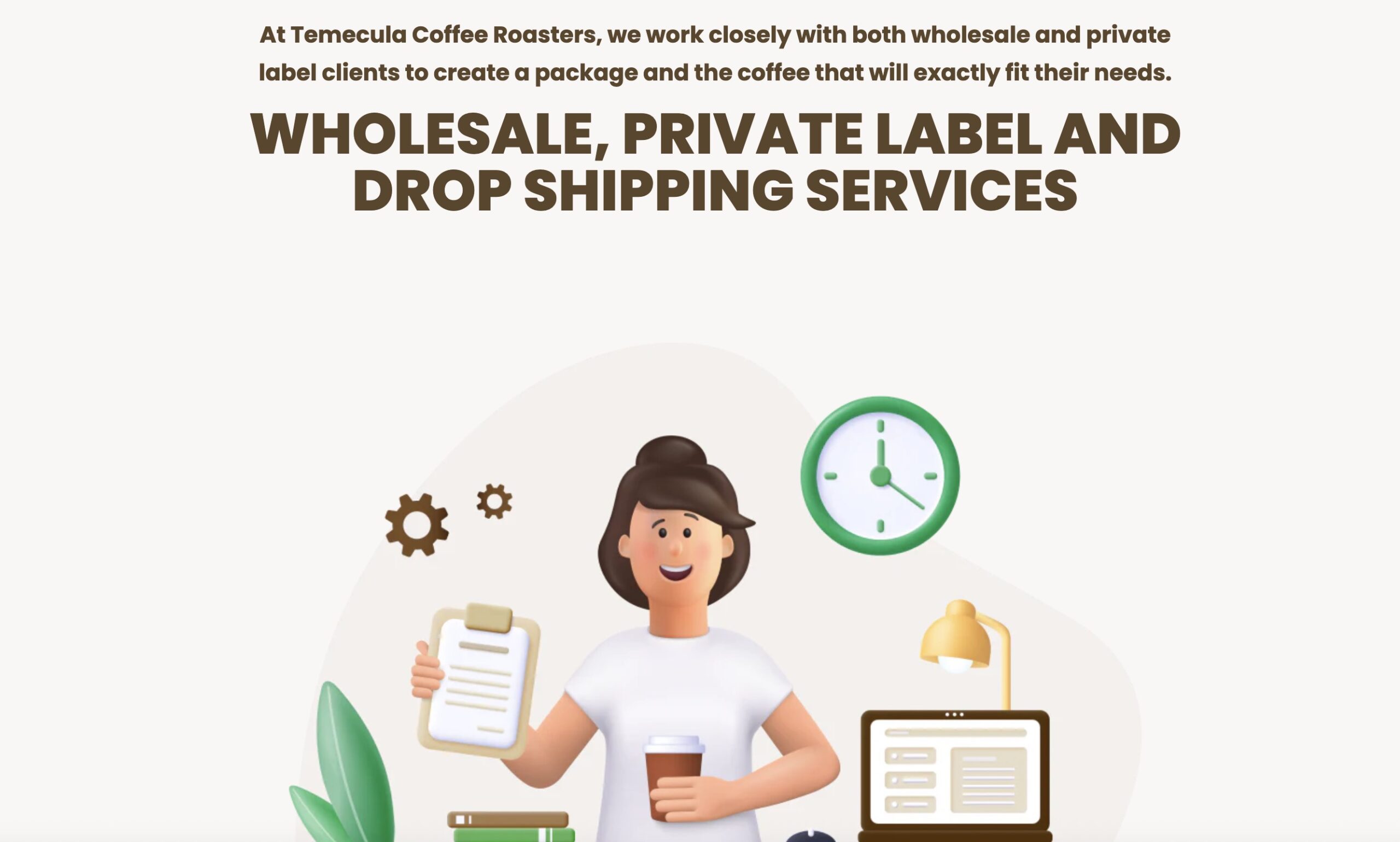
It supplies single-origin beans, blends, and flexible bag finishes. It accepts private-label orders and can handle moderate customization — a good fit for dropship coffee companies that want a mix of specialty options and approachable blends.
Old Chicago Coffee
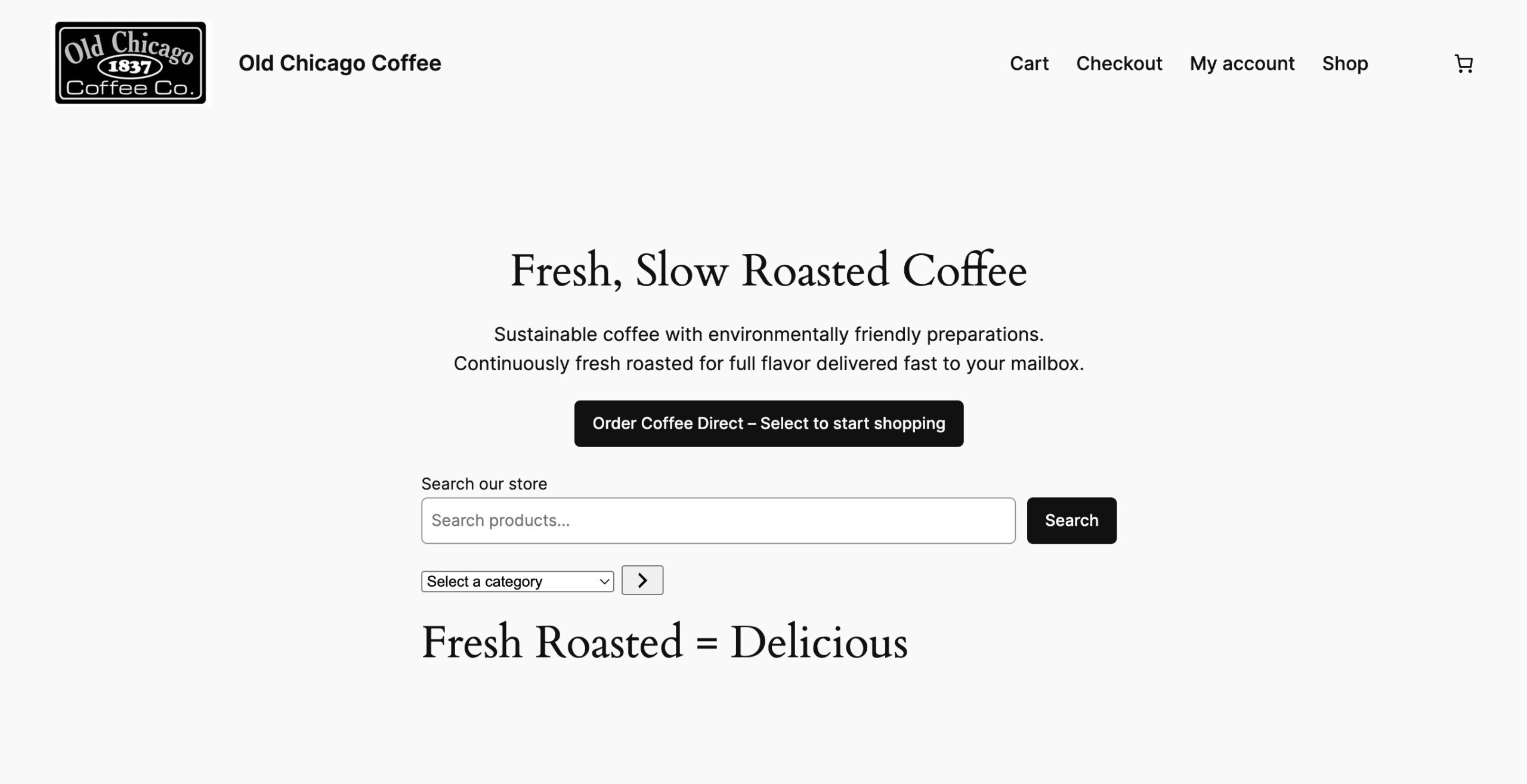
It offers white-label options with competitive pricing and pod formats. It’s a good fit for sellers testing volume-focused SKUs, such as pods and instant, where price and speed are key considerations.
Blessed Bean Coffee
It supports private-label and trim MOQ options for branded packaging to dropship coffee. It’s a good match for creators who want a boutique feel and need supplier flexibility for seasonal blends.
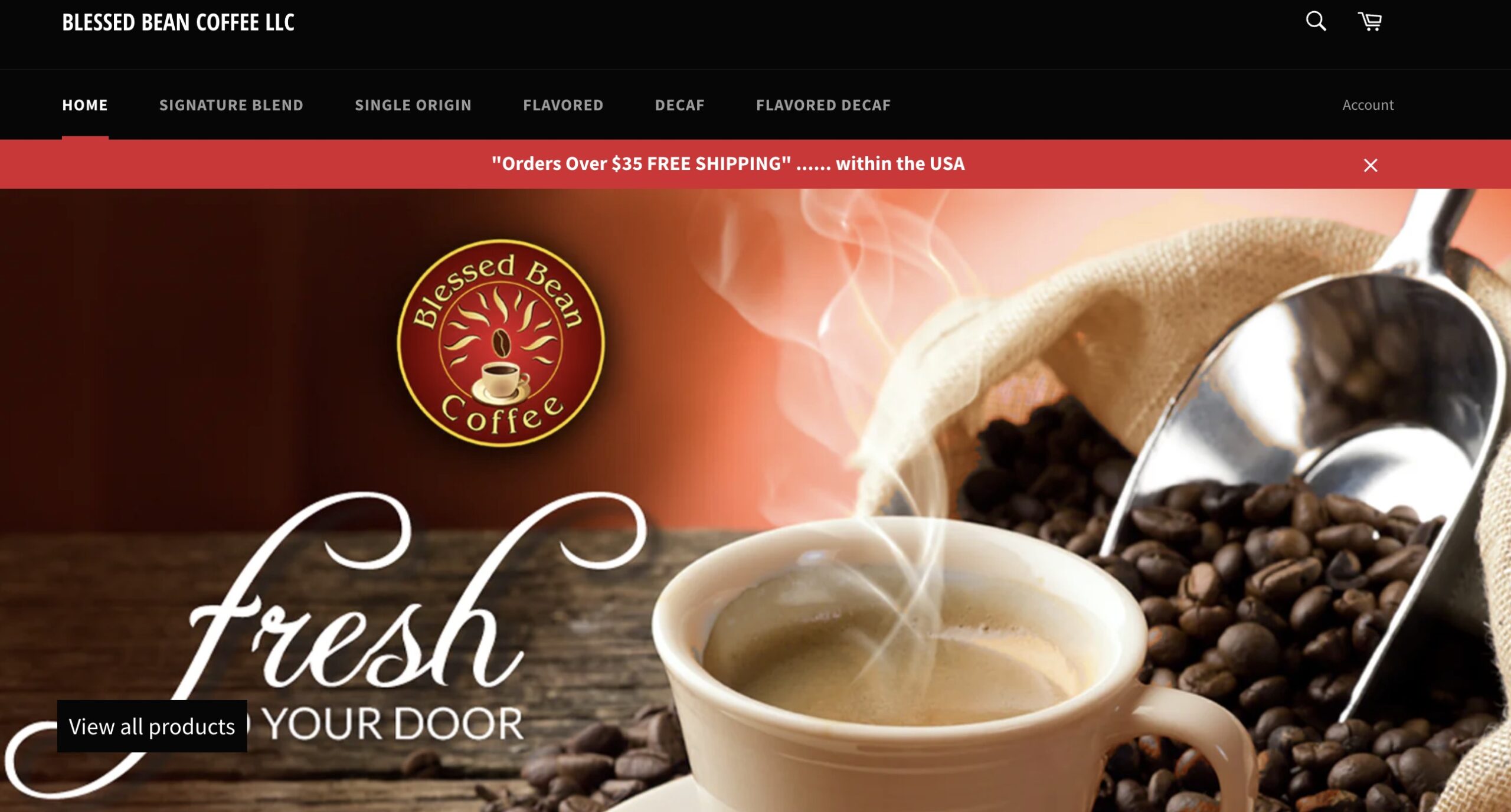
Path Coffee Roasters
This company specializes in high-quality roasts and can offer a private-label model for dropshipping coffee. It works well for brands that want to emphasize origin stories and higher price positioning.
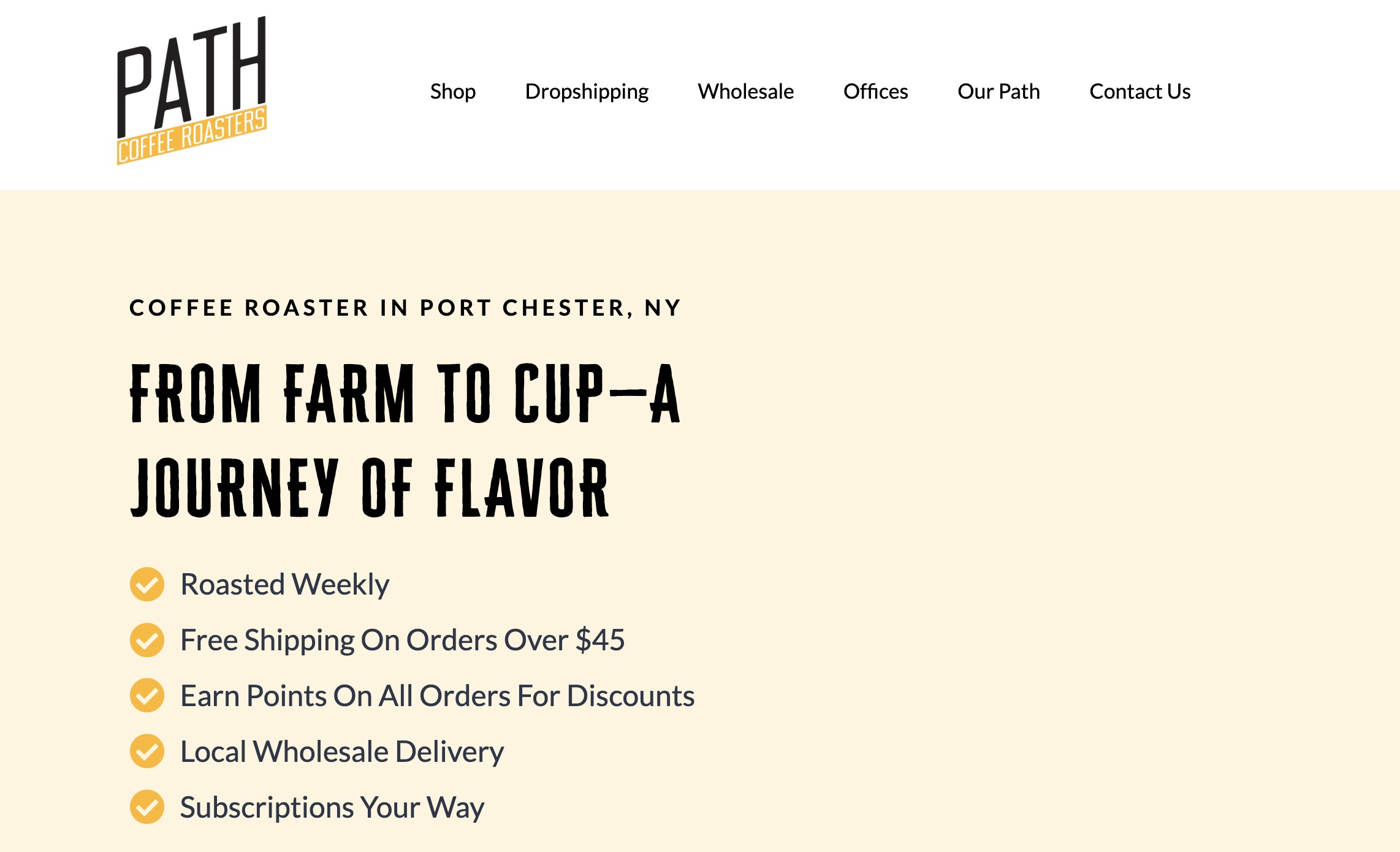
Roastify
Roastify offers a turnkey private-label solution and fulfillment for subscriptions. It’s good for sellers who want complete branding control and a reliable setup for recurring orders.
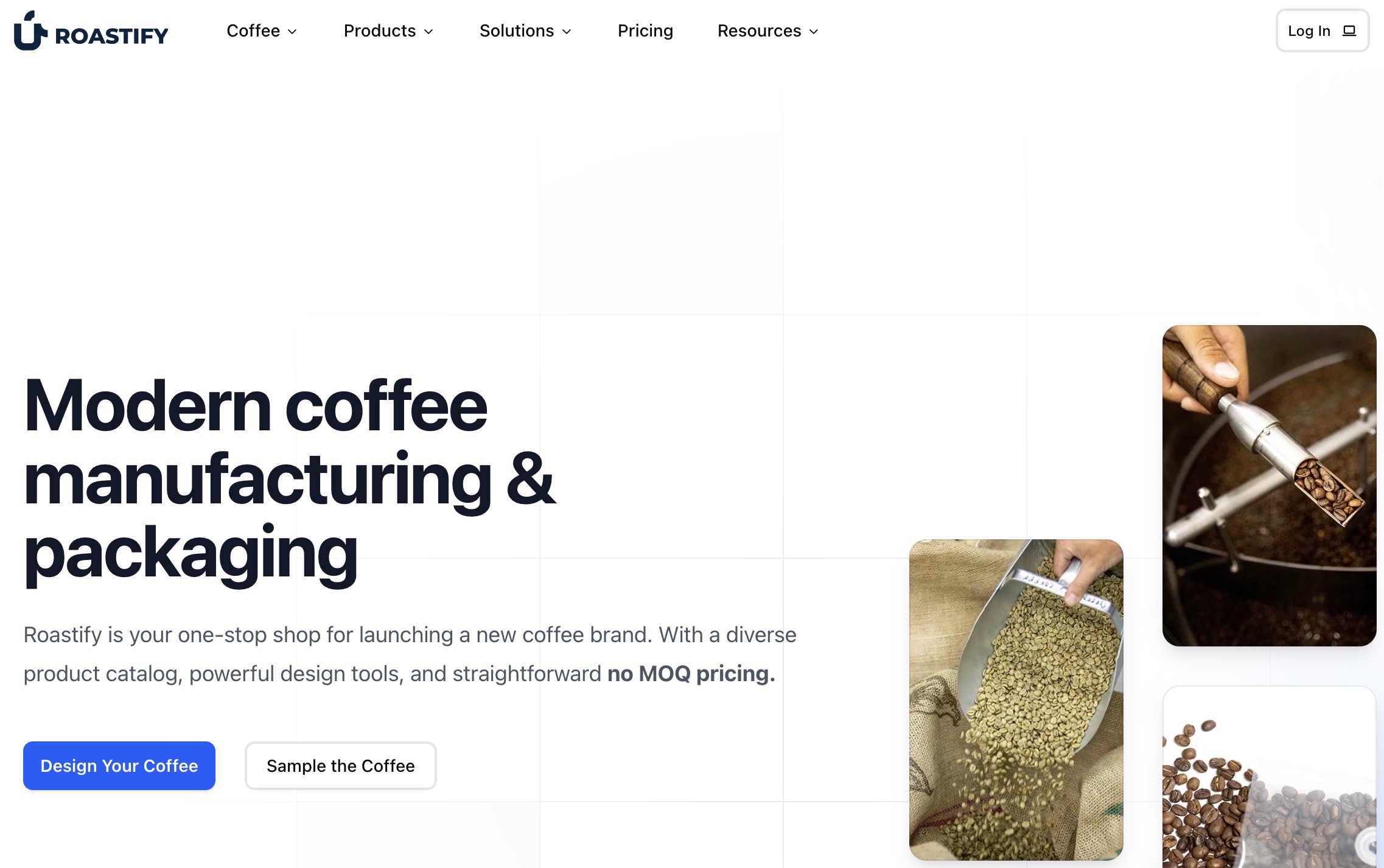
Step 3: Build your online coffee store
Create a store that tells your coffee story, shows real product shots, and makes shipping and returns clear. Good copy and photos help customers trust your brand and make it easier to dropship coffee.
Here are some popular ecommerce platforms you can choose from to dropship coffee:
- Shopify: Great for coffee stores that want reliable ecommerce tools and integrations
- WooCommerce: Flexible plugin for WordPress that’s ideal for custom content-led stores
- BigCommerce: Fits businesses that need strong built-in tools as they scale
- Squarespace: Ideal for merchants who want an aesthetic store that’s easy to run
- Wix: Easy to learn and perfect for smaller stores testing the market
After selecting a platform, the next step is to make your store easy to browse.
Here are some tips to help you out:
- Use high-quality product photos: A simple shot of the bag, a close-up of the label, and maybe a brewed cup can help people feel more sure about what they’re buying.
- Explain what makes your brand unique: Say why your coffee matters in one or two lines — origin, roast, or mission. That helps customers remember you.
- Write informative product descriptions: Keep descriptions concise yet practical — list flavor notes, roast level, and who might enjoy it. A clear description answers the questions that stop people from making a purchase. Here’s an example.

- Highlight featured or bestselling products: Give first-time visitors a “start here” spot. Feature your bestsellers to make the choice easier for first-time customers.
- Keep navigation clean and easy to follow: Organize products in a way that real customers would naturally ask for them — by roast, flavor, or format.
- Add customer reviews and testimonials: Include a few honest lines from buyers about their experience with taste and delivery to build trust. Short reviews work better than long praise.
- Include educational content: Add one simple brew guide and a grind chart so customers can brew right away. Helpful advice reduces returns and increases repeat buys.
- Offer a subscription option: Let customers pick size and cadence and make skipping simple. Subscriptions cut friction for repeat purchases.
Step 4: Market your coffee dropshipping store
You can have great coffee and a neat store, but if no one sees it, nothing happens. That’s why marketing is crucial if you want to dropship coffee. Pick a few channels and promote your store frequently.
Here are a few marketing strategies that you can use:
- SEO content: Write short, helpful posts about brewing, storage, and flavor notes so people find you when they search. These pages consistently generate traffic over time without requiring recurring ad spend. Example:
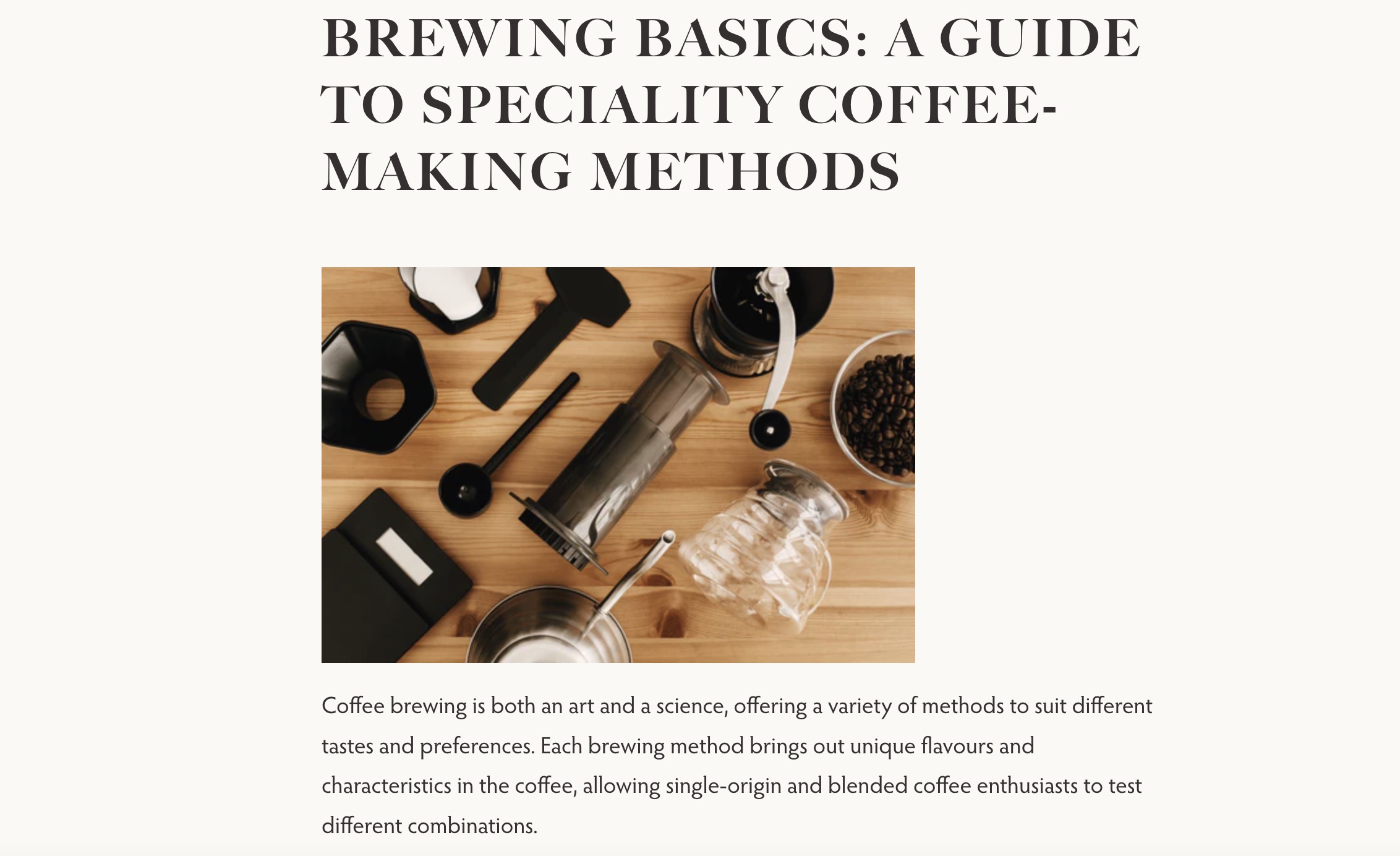
- Social media marketing: Share quick videos or honest photos of your coffee products. Post regularly so people learn your name and style.
- Influencer or UGC content: Ask real customers to tag you and collaborate with small creators who genuinely enjoy coffee, not just promote products.
- Email marketing: Start collecting emails immediately and manage them in Omnisend, allowing you to automate welcome emails, product highlights, and brief educational messages.
- Paid ads: Try short ad tests to find what message lands and which audience clicks, then move budget to the winners.
- Local events and samples: Set up a table at a market or host a tasting so people can try before they buy, and you can collect emails in person.
Quick sign up | No credit card required
Coffee buyers are typically repeat customers who purchase from their favorite brand frequently. That’s why it’s essential to stay in touch with them, and email is the perfect channel for that.
Omnisend makes it easy to turn first-time buyers into repeat customers with automated flows and simple campaign tools.
Omnisend users see an average return of about $68 for every $1 spent, based on an analysis of merchants using email, SMS, and automation.
Key Omnisend features that can help you dropship coffee:
- Email automation: Automate essential emails for quick and efficient communication. Some common ones can be welcome and abandoned cart emails.
- Pre-built email templates: Omnisend provides a collection of editable templates that cater to most ecommerce needs. This keeps your emails consistent, even when you’re short on time.
- SMS automation: Texts are great for time-sensitive updates or special offers. They cut through the noise and get scanned. Use SMS marketing for key moments in the customer journey.
- Popups and forms: Add simple popups to grow your email list from new visitors. These work well when paired with a small offer. More signups mean more chances to sell later.
 | The Cake Story’s automated reminder emails Omnisend helped The Cake Store run a single automated reminder that reached 30,774 subscribers and drove about $37,000 in email sales. That same automation converted 32x better than its regular promotional emails, showing how well-timed automation beats bulk email blasts. Check out this case study to see the exact workflow and how they utilized Omnisend’s Product Picker to pull products directly from their store. |
Quick sign up | No credit card required
Step 5: Evaluate your results and optimize your store
When your store has a few orders under its belt, examine the data. If you don’t check, you’ll keep guessing, and that costs time and money.
Start by tracking the following when you dropship coffee:
- Bestsellers: Which products keep showing up in orders
- Customer retention: Do people buy again or subscribe
- Traffic source performance: Which ads, posts, or search terms bring genuine buyers
Then use those results to tweak the store and test again. Think of optimization as small experiments you run every week or month.
Ready to start your coffee dropshipping business?
Dropshipping coffee can be highly profitable because buyers typically return, and there’s ample room to differentiate yourself.
Offer high-quality products, work with reliable suppliers, and build a user-friendly store to get the best results.
Then use marketing to encourage customers to continue ordering. Omnisend makes it easy by automating email and SMS, allowing you to keep customers stocked without manual work.
Quick sign up | No credit card required
TABLE OF CONTENTS
TABLE OF CONTENTS


No fluff, no spam, no corporate filler. Just a friendly letter, twice a month.

 OFFER
OFFER







